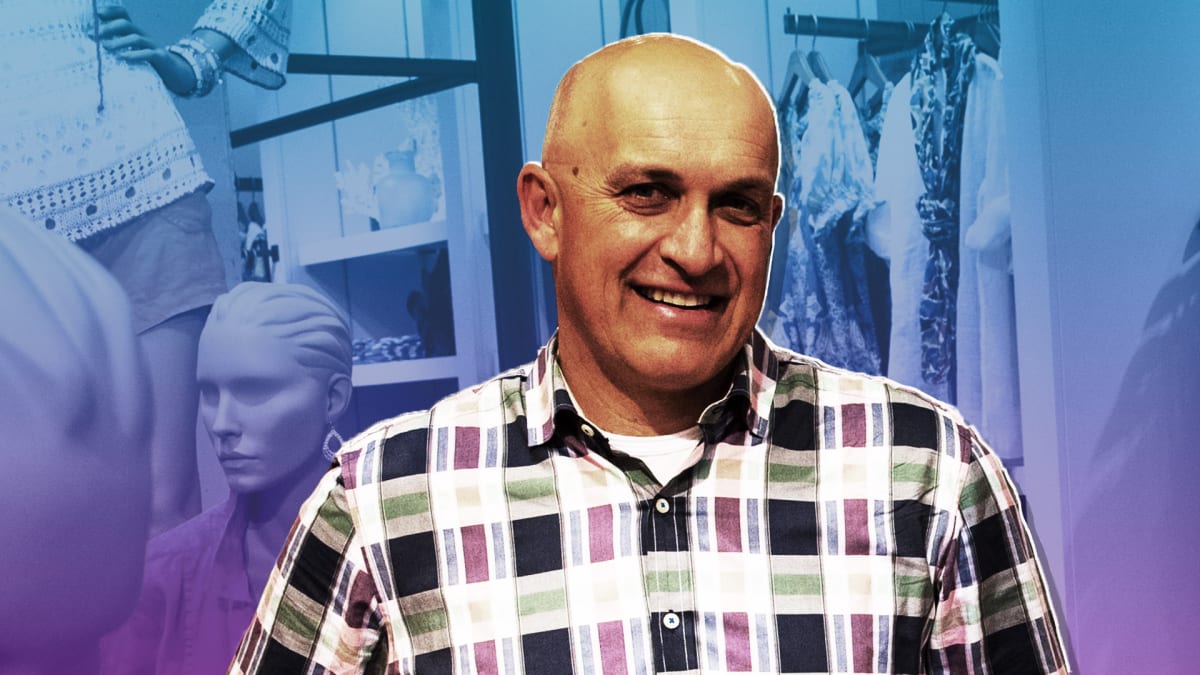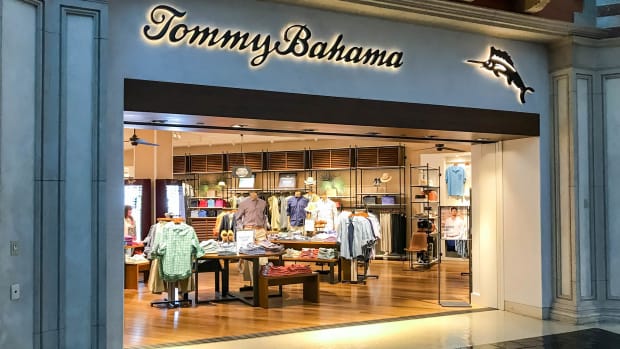
For the 30 years that it's been around, the Tommy Bahama brand has been trying to take its customers across different business concepts.
What is now the Oxford Industries Inc. (OXM)-owned brand began in 1993 as a men's casual clothing line meant to reflect the "permanently on the beach" lifestyle. The first restaurant with the same concept opened in Naples, Florida three later.
DON'T MISS: Estée Lauder Company Gets Into the Men's Fashion Market
There are now 21 restaurants and smaller Marlin bars at some of the 160 Tommy Bahama locations across the country that, collectively, brought Tommy Bahama $100 million in 2022 restaurant sales.
As the company prepares to tap into a new industry with the opening of its Miramonte Resort & Spa in California's Coachella Valley at the end of 2023, chief executive Wood sat down with TheStreet to talk about the pressures of being an omnichannel brand.

Shutterstock
Here's How Tommy Bahama Has Moved Away From The Mall
"If a button falls off a shirt or if a hem goes out on a dress, people forgive you," Wood said. "If you give them food poisoning at a restaurant or wreck a vacation, they'll never go back."
This interview has been edited for length and clarity.
TheStreet: How do you maintain brand consistency across the retail, restaurant and, now, resort sectors?
Doug Wood: We've been able to keep the brand very focused. We're an island lifestyle brand but the island is a state of mind meant to inspire you to relax. With everything that we do, we really look at it and say to ourselves, 'okay, does this really fit with what we're trying to do as a brand?' We call it 'where's the sand?' We understand that we can sell and put our name on a lot of things but don't do it if [we don't] see any sand in that product whatsoever.
If anything, that's kept us alive and vibrant through 30 years because it's hard to keep a brand growing when there's a new hot brand every year that can take your place. Things have changed dramatically. When we started, we were an oversized Hawaiian shirt brand. Fifteen years ago, people always referred to us as 'my dad's favorite brand.' Now, printed silk shirts make up less than 5% of our total business. We've been able to move into all these different categories just because our guests change. As we get more guests coming to us, we're realizing that they're coming to us for the brand and for the way we bring our products.
TheStreet: It's true that a certain generation of shoppers still associate Tommy Bahama with the store they saw at their local mall. How are you navigating a changing retail landscape?
DW: The biggest change that we've seen is, of course, digital. The game-changer over the last 15 to 20 years has really come down to understanding the power of digital and the power of mobile. I look at the traffic on our website and see that over 60% of it is coming from mobile. That's a lot of purchasing decisions and a lot of investigation that goes on through people's phones.
I don't see a huge separation between how people shop online and in the stores when it comes to what they're willing to buy as long as they know they can return it. They can go into the store and maybe look for a different size or get quicker service sometimes but I definitely see people order order four, five or even six swimsuits online and then return four or five to the store.
I've always been of the belief that we don't have a digital shopper and a phone shopper but a Tommy Bahama shopper. They're just choosing to interact with the brand in all these different ways so what we have to do is enrich the experience in each one of these areas and tell the consistent message of the brand.
Why Womenswear and Entertainment Are New Areas Of Focus
TheStreet: How have clothing shopping trends changed post-pandemic? Numbers show that athleisure sales are still going strong while the whole "people will miss formal clothes after sitting around in sweatpants" prediction has not really panned out.
DW: Athleisure has definitely become more sportswear-ish. I'll give a lot of credit to lululemon (LULU) and their ABC Pant for men. I don't think that there's a men's sportswear company today that doesn't have their version of the ABC Pant. People have their tech product that they put on in the morning and when they go to work, they want the same performance and comfort. They want to throw it in the washer, throw it in the dryer, pull it out and have it look great. That's definitely very different from what we were seeing 10 to 15 years ago.
Another thing we've seen take off with our business in the last four to five years is womenswear. It's the fastest-growing part of our business. I've been here for 22 years and we've been trying to make this happen for those 22 years. It's so frustrating to be in one of our stores, see that she's shopping but also know that she just hasn't been happy with what we've been offering to her. It's something that we've been working on for a long time and are currently at 33%-67% women's to men's. We should be a bigger women's company than we are men's but that changing momentum keeps this company moving forward.
TheStreet: Was a rising interest in travel behind the decision to start developing the Tommy Bahama Miramonte Resort & Spa?
DW: On the website, I can get a customer's attention for somewhere between six to seven minutes. We track these things and see that in a store, that number goes up to maybe 15 minutes. In a restaurant experience, I can get you for anywhere from 45 minutes to two hours in our environment. With a resort, I'm asking someone to give us three-five-seven days of their most previous time. We have to be not just good but because you don't want to disappoint your guests. If a button falls off a shirt or a hem goes out on a dress, people forgive you. If you give them food poisoning at a restaurant or wreck a vacation, they'll never go back. We've been working on this project for like 15 years and finally feel like we've landed. It's going to be a great one.







